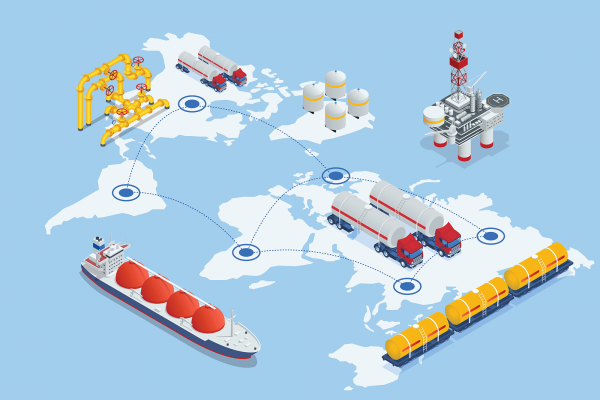IF YOU THOUGHT Job had it bad, consider for a second the trials of Travis Dardar.
Dardar was born a Houma Indian in Isle de Jean Charles in Louisiana — whose residents are the first Americans that the federal government has officially designated as climate refugees, as it bought out their land before the sea could swallow it. So Dardar moved upstream to Cameron, La., and resumed his life as a fisherman — until an out-of-state company built a truly giant liquified natural gas (LNG) export terminal half a mile away and announced plans for another, 350 feet from his house. This time it was the fossil fuel company that bought him out, and so he’s moved yet further upstream — a man chased not once but twice from his home by the scourge of hydrocarbons.
That LNG buildout now underway in the Gulf and elsewhere — there are seven of these terminals operational already, with plans for 20 more — is the most extreme example of fossil fuel expansion in the U.S., even though it’s mostly flown under the radar. The fight against the absurd Willow oil project in Alaska, for instance, became a TikTok viral sensation, and millions of people signed petitions; but bad as it is, Willow will produce 1/20th of the carbon emissions associated with just one of the planned new LNG terminals, the CP2 project in Dardar’s old home of Cameron.
President Joe Biden blew it on Willow, breaking his pledge to block new drilling on federal lands, and it may endanger his hopes with young voters next year. Luckily for him, he gets another chance with these LNG projects, many of which are currently awaiting a certificate that they’re in the “public interest” from Biden’s Department of Energy.
Read the Full Article

